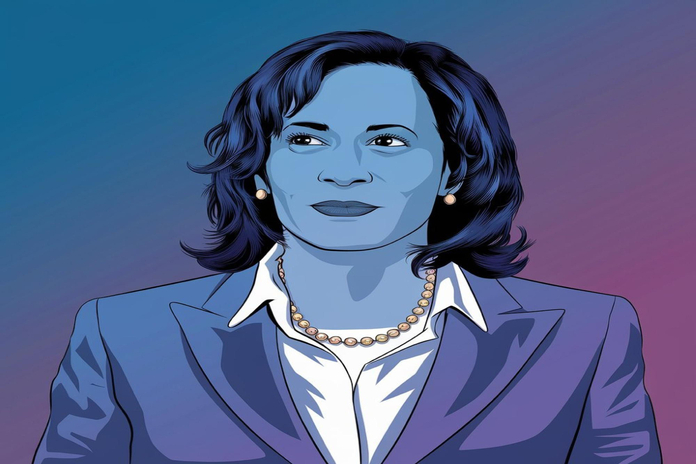Ripple Co-Founder Endorses Kamala Harris in 2024 Race
This post was originally published on this site

Chris Larsen, Co-Founder and Executive Chairman of Ripple Labs, has joined a group of 88 corporate leaders endorsing Vice President Kamala Harris for the 2024 U.S. presidential race. This move highlights potential divisions among industry leaders regarding political support, especially within the cryptocurrency sector. Larsen’s decision to back Harris contrasts with the more conservative leanings of other high-profile figures in the cryptocurrency world, including Ripple’s own CEO, Brad Garlinghouse.
Ripple’s Political Endorsements and Corporate Influence
Larsen’s endorsement of Kamala Harris represents a broader trend of corporate leaders publicly backing political candidates who align with their interests. The letter signed by Larsen, along with executives from companies such as Yelp, Box, and Snapchat, voiced support for Harris, citing her commitment to “fair and predictable policies that support the rule of law, stability, and a sound business environment.” These corporate endorsements signal a growing focus on shaping the regulatory landscape for digital assets.
The Ripple political endorsements have largely been strategic, targeting candidates who are perceived as crypto-friendly. While Ripple has donated around $48 million to pro-crypto super political action committees like Fairshake, the company’s overall political giving has shown a willingness to work with both sides of the political aisle.
Ripple’s Complex Political Alignment
Despite Larsen’s endorsement of Harris, Ripple’s broader political activities suggest the company is playing both sides of the aisle. Ripple and its CEO, Brad Garlinghouse, have contributed significantly to pro-crypto Republicans, notably targeting crypto critic Sen. Elizabeth Warren. Garlinghouse has personally donated $50,000 to a super-PAC aimed at securing a Republican majority in the U.S. Senate. This support for Republican causes seems to contrast with Larsen’s backing of Harris and her Democratic platform, revealing the complex dynamics of Ripple’s political strategy.
While Garlinghouse’s contributions align with efforts to counter regulatory critics like Warren, the Ripple political endorsements have also supported Democrats, especially those seen as more favorable to the growth of the cryptocurrency industry.
The Battle Over Crypto Regulation
Ripple has been at the center of a long-running legal dispute with the U.S. Securities and Exchange Commission, which accused the company of violating securities laws in its sale of the XRP token. The case is one of the most high-profile legal battles shaping how cryptocurrencies will be regulated in the United States. Many within the industry view SEC Chair Gary Gensler’s stance on crypto as aligning with Warren’s, creating friction between Ripple and regulatory authorities.
Ripple’s political activities, including the endorsement of Kamala Harris and support for PACs on both sides of the aisle, reflect its desire to influence the regulatory environment to be more favorable to digital assets. By backing candidates who may be more open to cryptocurrency, Ripple hopes to gain traction in its efforts to shape policy and reduce regulatory scrutiny.
Kamala Harris and the Crypto Sector
While former President Donald Trump has explicitly embraced cryptocurrency in his current campaign, pledging to make the U.S. the “crypto capital of the world” if re-elected, Kamala Harris has been more reserved in her public statements about digital assets. Her campaign, however, has shown signals of warming up to the cryptocurrency industry. One of her supporting PACs, Future Forward USA, has begun accepting cryptocurrency donations through Coinbase Commerce, indicating that Democrats may be increasingly open to the digital assets sector.
Harris’ top campaign officials have suggested that she will support policies that encourage the growth of the crypto industry, though details remain scarce compared to Trump’s overt positioning. For Ripple and other digital asset companies, Harris’ more measured approach to crypto could offer a middle path, allowing for growth without the aggressive regulatory crackdowns favored by some of her Democratic colleagues.
Conclusion: Ripple’s Political Strategy and the Road Ahead
The Ripple political endorsements reflect the company’s strategic efforts to navigate a complex political and regulatory landscape. Chris Larsen’s endorsement of Kamala Harris signals an alignment with corporate leaders who see her as a stabilizing force for business and regulatory policy. However, Ripple’s support for both Democratic and Republican candidates underscores the company’s pragmatic approach to ensuring the future of the cryptocurrency industry.
With regulatory battles still ongoing, Ripple’s political maneuvering will continue to play a crucial role in shaping the future of crypto regulation in the U.S. Whether through endorsements or financial contributions, Ripple’s influence in politics and policy will be critical in defining the next chapter of the digital asset industry.
Featured Image: Freepik






